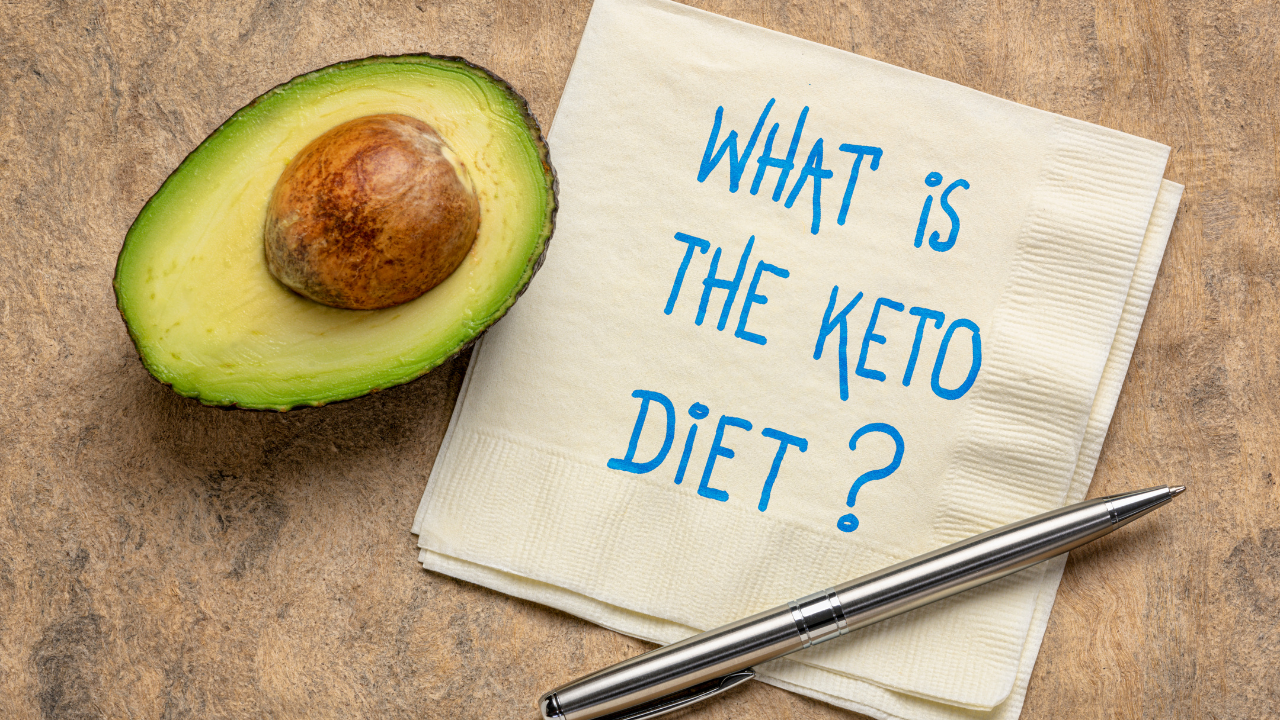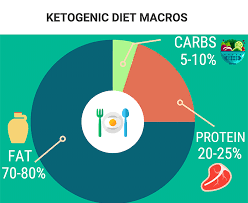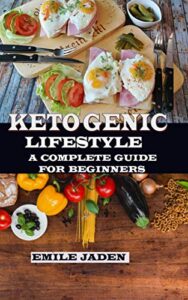
Everything You Need To Know About a Keto Diet for Beginners
In today’s health-conscious world, the ketogenic diet, or simply the “keto diet,” has gained immense popularity. But what exactly is the keto diet, and how can beginners get started on this transformative journey?
This comprehensive guide will provide you with all the essential information you need to embark on your keto adventure, from understanding the basics to navigating potential pitfalls.
Let’s dive right into Keto Diet for Beginners!
The ketogenic (keto) diet, presented by Dr. Jordan Wagner, a board-certified emergency medicine physician.
Dr. Wagner introduces the topic by mentioning how some people claim to lose weight by consuming large amounts of fats like peanut butter and bacon and attribute their success to the keto diet.
Keto Diet Goal:
-
- The ketogenic diet is a high-fat, adequate-protein, low-carbohydrate diet.
- It forces the body into a state called ketosis, where the body burns fat instead of carbohydrates for energy.
How Does the Keto Diet Work?
-
-
- The diet relies on ketone bodies produced by the liver from stored fat.
- Ketosis occurs when people eat low or no carbs, leading to a buildup of ketones in the bloodstream. This causes blood sugar levels to drop, and the body starts breaking down fat for energy.
-
What to Eat on a Keto Diet?:
-
-
-
- A daily 2,000-calorie diet might include 165 grams of fat, 40 grams of carbs, and 75 grams of protein.
- Healthy fats, such as omega-3s and monounsaturated fats, should be incorporated.
- Protein is part of the diet, but it doesn’t differentiate between lean and fatty protein sources.
- Some fruits, like berries, can be consumed in small portions. Vegetables are mostly restricted to leafy greens, but others like asparagus, broccoli, and zucchini are allowed.
-
-
Is the Keto Diet Healthy?
-
- The keto diet is used medically to treat hard-to-control epilepsy in children.
- Some research suggests benefits for blood sugar control in people with diabetes.
Who is the Keto Diet Right For?
-
- Originally, the keto diet was a treatment for neurological diseases like epilepsy.
- It can benefit various health conditions, including type-2 diabetes, Alzheimer’s disease, heart disease, and cancer. However, more research is needed.
- It’s essential to consult with a physician and dietician before starting the diet.
Cons of the Keto Diet:
-
- The diet is high in saturated fat, which can be linked to heart disease.
- There’s limited evidence about its long-term safety and effectiveness outside of treating epilepsy.
- Side effects can include constipation, headaches, bad breath, and more.
- It can be challenging to get a balanced set of nutrients on the keto diet. A multivitamin is often recommended.
So What now:
-
- The keto diet can be beneficial for those overweight, with diabetes, or looking to improve metabolic health.
- It might not be suitable for elite athletes or those wanting to gain significant muscle or weight.
- Dr. Wagner encourages viewers to share their experiences with the keto diet in the comments.

Dr. Wagner emphasizes the importance of individualized nutrition and consulting with healthcare professionals before making significant dietary changes.
What Is the Basics of Keto Diet for Beginners?
The ketogenic diet is a low-carbohydrate, high-fat diet designed to encourage your body to enter a state called ketosis. In ketosis, your body burns fat for fuel instead of carbohydrates. The primary goal of this diet is to switch your metabolism from relying on glucose to burning stored fat, leading to weight loss and various health benefits.
Benefits of a Keto Diet
1. Weight Loss
One of the most prominent benefits of the keto diet is its effectiveness in promoting weight loss. By restricting carb intake, your body turns to fat stores for energy, leading to significant fat loss over time.
2. Steady Blood Sugar Levels
Keto can help stabilize blood sugar levels, making it an attractive option for people with type 2 diabetes or those looking to reduce sugar cravings.
3. Enhanced Mental Clarity
Many individuals on the keto diet report improved mental focus and clarity. This is believed to be a result of the steady energy supply provided by ketones.
4. Increased Energy Levels
As your body adapts to burning fat for fuel, you may experience sustained energy levels throughout the day, reducing the need for frequent snacks.
5. Improved Cholesterol Profile
Some studies suggest that the keto diet may lead to improved levels of “good” HDL cholesterol and reduced levels of “bad” LDL cholesterol.
How to Start a Keto Diet
1. Calculate Your Macros
Begin by determining your daily macro-nutrient goals. Typically, a keto diet consists of approximately 70-75% fat, 20-25% protein, and 5-10% carbohydrates.
2. Choose Keto-Friendly Foods
Focus on foods rich in healthy fats like avocados, nuts, seeds, and olive oil. Include protein sources such as meat, fish, and poultry while limiting carbohydrate-rich foods like bread, pasta, and sugary snacks.
3. Stay Hydrated and Supplement
Increased urination is common during ketosis, which can lead to electrolyte imbalances. Stay hydrated and consider supplementing with electrolytes as needed.
4. Monitor Your Progress
Regularly track your food intake, monitor your ketone levels, and adjust your diet as necessary. You can use ketone testing strips to check if you’re in ketosis.
5. Be Mindful of Keto Flu
In the initial days of a keto diet, some individuals experience the “keto flu,” characterized by fatigue, headache, and irritability. This is temporary and can be alleviated by staying hydrated and ensuring proper electrolyte intake.
Common Mistakes to Avoid
1. Ignoring Fiber Intake
While carbs are limited, it’s essential to include fiber-rich foods like vegetables to maintain digestive health.
2. Overeating Protein
Excessive protein intake can hinder ketosis. Balance your macros and prioritize fat consumption.
3. Not Staying Hydrated
Dehydration can lead to various side effects. Drink plenty of water throughout the day.
4. Not Consulting a Healthcare Professional
If you have underlying health conditions or concerns, consult a healthcare provider before starting any new diet.
The keto diet is a powerful and effective way to achieve weight loss and reap numerous health benefits. However, it’s essential to approach it with the right knowledge and understanding. By calculating your macros, choosing the right foods, and avoiding common pitfalls, you can embark on a successful keto journey. Remember that individual results may vary, so listen to your body and consult with a healthcare professional if you have any concerns. With dedication and proper guidance, a keto diet for beginners can be a rewarding path to improved health and vitality.
The Ultimate Keto Diet Food List for Success
Are you ready to embark on a journey towards a healthier and more energized you? The ketogenic diet, often referred to as the keto diet, is a low-carb, high-fat eating plan that has gained immense popularity for its ability to help individuals shed unwanted pounds and improve overall well-being. To help you kickstart your keto journey on the right foot, we’ve compiled the ultimate Keto Diet food list, complete with essential information and tips to make your transition to ketosis as smooth as possible.
Understanding the Ketogenic Diet
Before we delve into the foods you can enjoy on the keto diet, let’s get a grasp of what this dietary regimen is all about. The keto diet focuses on drastically reducing carbohydrate intake and replacing those carbs with fats. This shift in macronutrient composition forces your body into a metabolic state called ketosis, where it burns fat for energy instead of glucose.
Keto Diet Macros
To maintain ketosis, it’s crucial to understand the macronutrient breakdown for the keto diet:
- Fats: This should make up about 70-75% of your daily caloric intake.
- Proteins: Aim for 20-25% of your daily calories from protein.
- Carbohydrates: Limit your carb intake to only 5-10% of your daily calories.
Keto-Friendly Fats
Include the following healthy fats in your diet:
- Avocado oil
- Olive oil
- Coconut oil
- Butter and ghee
- Fatty fish like salmon and mackerel
Lean Protein Sources
For your protein needs, opt for lean choices such as:
- Chicken breast
- Turkey
- Lean cuts of beef
- Fish (except for fatty fish)
- Eggs
Low-Carb Vegetables
Load up on these low-carb veggies:
- Spinach
- Kale
- Broccoli
- Cauliflower
- Zucchini
Keto-Friendly Dairy
Dairy can be enjoyed in moderation, so choose:
- Cheese (preferably hard and aged)
- Heavy cream
- Greek yogurt (unsweetened)
Nuts and Seeds
Nuts and seeds make great keto-friendly snacks:
- Almonds
- Walnuts
- Chia seeds
- Flaxseeds
- Pecans
Sweeteners
If you have a sweet tooth, these keto-approved sweeteners are your best friends:
- Stevia
- Erythritol
- Monk fruit extract
Beverages
Stay hydrated with these keto-friendly drinks:
- Water
- Herbal tea (unsweetened)
- Coffee (black or with a splash of heavy cream)
Foods to Avoid
Now, let’s talk about the foods you should steer clear of while on the keto diet:
- Sugary snacks and desserts
- Bread and grains
- Starchy vegetables (e.g., potatoes, corn)
- Sugary fruits
- Processed foods with hidden carbs
The fact is keto diet can be a powerful tool for achieving your health and weight loss goals. Armed with this comprehensive Keto Diet food list, you now have the knowledge to make informed choices that will keep you in ketosis and on the path to success. Remember, a well-balanced keto diet is not only about what you eat but also about.



